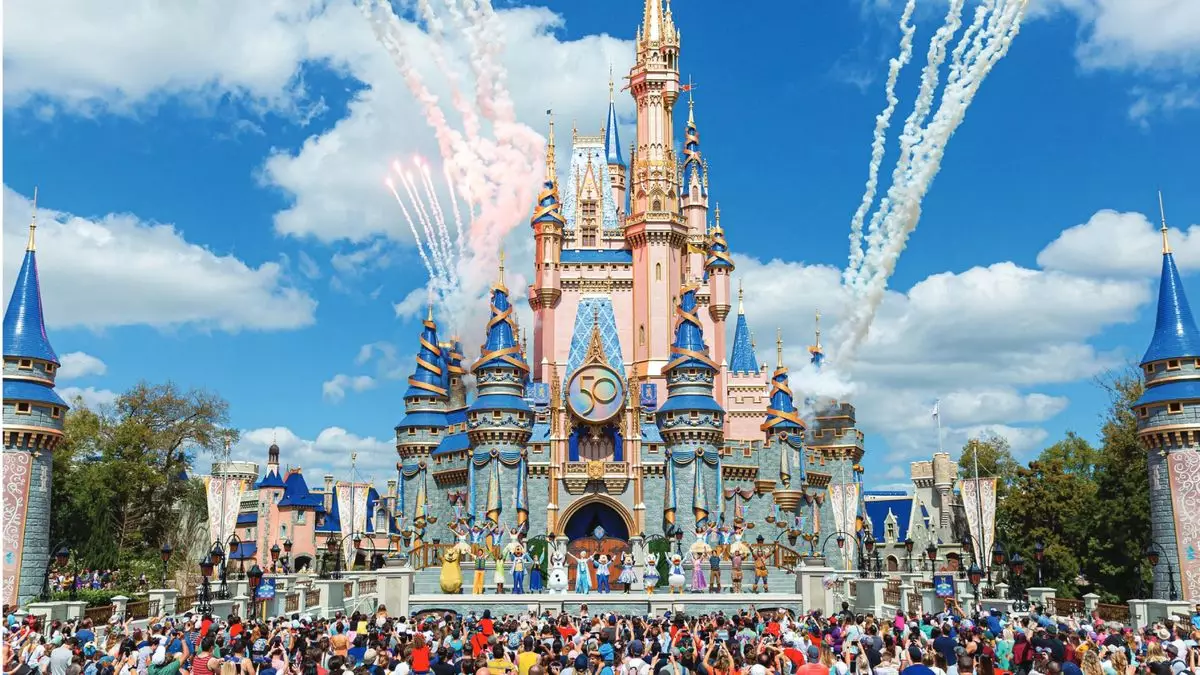The way Disney weaves its enchantment into the fabric of the U.S. economy is a captivating tale worthy of exploration. Recently, Disney commissioned a groundbreaking study that unveils the staggering economic impact of its domestic resorts—Walt Disney World in Florida and Disneyland in California. The analysis reveals a staggering combined economic contribution of roughly $67 billion. But what does this mean for local communities and the national economy? This hefty figure underscores Disney’s role as not merely an entertainment company, but a pivotal economic engine fueling jobs, commerce, and revenue across the United States.
Methodology: A Comprehensive Approach
The study conducted by Tourism Economics focused on a multi-faceted methodology that scrutinizes all aspects of economic interaction initiated by Disney’s theme parks. Michael Mariano, the head of economic development at Tourism Economics, articulated the need for a holistic view through direct, indirect, and induced impacts. Direct impacts refer to the tangible economic activities, such as spending within the resorts and neighboring businesses, while indirect impacts analyze the supply chain dynamics—spending by Disney on local goods and services. The induced impacts offer insights into the ripple effects generated by employees who spend their wages within their communities.
In a world where economic indicators often paint a fragmented picture, this comprehensive model provides a nuanced understanding of how Disney’s operations ripple through the economy, laying bare the interconnectivity between tourism and broader economic stability.
Regional Highlights: California and Florida in Focus
Disney’s theme parks are not just isolated entertainment hubs; they are cornerstones of their local economies. In Southern California, Disneyland was found to contribute a remarkable $16.1 billion to the local economy during the fiscal year 2024 alone. This astonishing figure parallels American consumer spending on pizza delivery, a relatable benchmark that showcases the magnitude of Disneyland’s economic presence. Supporting over 102,000 jobs, with approximately 75% localized within Orange County, Disneyland stands as the largest employer in the area—clearly illustrating its entrenchment in the community.
Meanwhile, down in Florida, Disney World has the astonishing ability to generate $40.3 billion in economic impact, supporting 263,000 jobs in the process. What is especially interesting, according to Mariano, is that Disney World did not only contribute to Florida’s economy but also had a far-reaching impact generating an additional $10.2 billion across the country. This inter-state economic activity showcases the strength of the Disney brand and its capacity to stimulate commerce beyond regional borders.
A Broader Economic Perspective
The hallmark of Disney’s economic influence can be understood through the implications of its $67 billion total combined impact. To put this figure into perspective, it is nearly equivalent to the total expenditures of U.S. consumers during significant spending events like Valentine’s Day, Mother’s Day, and Halloween combined. This striking analogy serves to illustrate just how powerful Disney’s economic role is—not just as a source of leisure but as a catalyst for nationwide financial activity.
Moreover, the tax contributions stemming from Disney’s operations cannot be neglected. In California alone, Disneyland contributed $2.6 billion in tax revenues. These figures suggest that responsible corporate practices coupled with a robust operational model can lead to significant socio-economic benefits, creating a symbiotic relationship between large corporations like Disney and the regions in which they operate.
Job Creation: The Heartbeat of Economic Growth
One of the largest impacts from Disney’s economic initiatives is job creation. With nearly 75% of the jobs tied to Disneyland directly impacting Orange County, these positions provide vital employment opportunities for thousands of residents. The entertainment industry often serves as a portal to employment for many, especially for young adults and those seeking entry-level positions. Consequently, Disney plays an integral role in shaping workforce readiness and upholding standards for service excellence.
Disney’s employment strategy also ripples outward, influencing various sectors including hospitality, retail, and transportation. Employees who earn a respectable wage and have job security contribute to other businesses, thereby nurturing a vibrant local economy.
In wrapping our understanding of the economic significance of Disney’s resorts, we find a narrative that extends far beyond mere entertainment. The remarkable $67 billion impact illustrates a complex web of interactions that benefits local economies, creates jobs, and underpins substantial economic activity nationwide. Disney stands as a powerful example of how structured corporate investment and community engagement can translate into substantial economic vitality. This narrative compels us to rethink the value of large corporations not just as profit-driven entities, but as pivotal contributors to regional and national economic health.

